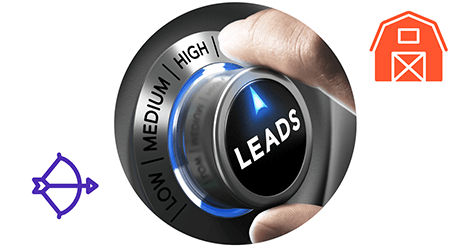Real Estate Farming Like A Pro Using Data & List Segmentation

Generating quality real estate leads or farming can take you from newbie to pro in no time. And the best part, there’s no real estate farming experience required: it’s merely smart marketing.
Real estate farming is a data-driven long-term marketing strategy to help you generate consistent leads that turn into sales. The work you put into farming your market upfront now pays off with real estate leads contacting you later (seemingly out of the blue).
However, to realize the enormous benefits of the real estate farming flywheel, you must do it right. And therein lies the challenge for most agents.
Many new agents make the mistake of chasing motivated sellers. While finding homeowners who are eager to sell seems like a no-brainer for quick paydays, chasing them can get expensive and burn you out. It’s an unsustainable long-term strategy.
In fact, chasing motivated sellers often leads to a quick exit from the industry for many agents. Why? Because you’re not working on establishing and growing your business, you’re too busy in the proverbial hamster wheel chasing low-hanging fruit.
Instead, data-driven professionals use real estate farming to work smarter, not harder. Using data to build a steady pipeline of quality leads while simultaneously minimizing the amount of time, money, and effort it takes to maintain their business.
If you’re curious about how to use data for farming your real estate market(s), you’re in the right place. In this post, we’re going to cover:
- What is farming real estate
- Does farming real estate work
- Real estate farming road map (step by step)
- Farming real estate like a pro using data
- Taking Real Estate Farming to The Next Level with Segmented Mailing Lists
- List Insights to Analyze Your Market
- Put Your Real Estate Farming On Cruise Control with Automation
Real Estate Farming 101
Real estate farming is smarter marketing – with an eye toward building a brand and a long-term business through a steady stream of quality leads. You are essentially deploying a set of data-driven marketing strategies by “farming” your local area for leads.
Allow us an analogy.
Think of building your real estate brand as planting fruit trees. Once those trees start growing and, later, develop fruit, you’ll reap the sweet rewards of your hard work. In the meantime, it’s vital to consistently water those trees and get your hands dirty a bit until they grow, and you can sit back and watch them bear fruit.
Curious about the keys to real estate farming success? They are:
- Staying motivated
- Establishing marketing consistency
- Following the data
Farming leads requires persistence to generate quality leads (just like those trees). But staying motivated while following the data and establishing marketing consistency means you’ll eventually see a sustainable shift in your business for years to come.
Prospecting vs Farming For Real Estate Leads
Keep in mind that there is no wrong way to start farming. It just takes time. So until you realize your farming efforts, you need to put food on the table, and that's where prospecting comes in.
The difference between prospecting and farming is INTENT:
- PROSPECTING: Is about finding people who are ready to transact RIGHT NOW - it is a transactional relationship
- FARMING: This is about building trust and relationships so that your market chooses you when they're ready.
Short-term prospecting vs long-term farming:
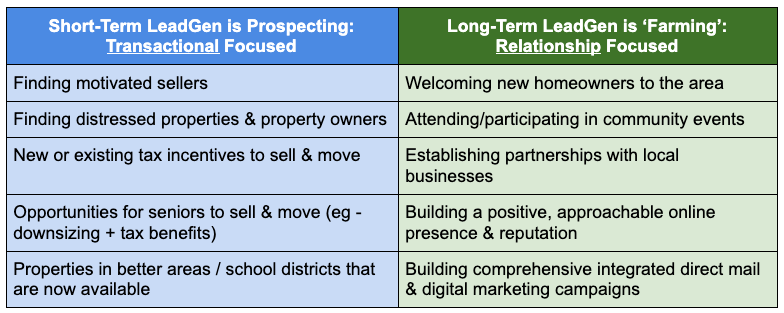
When prospecting for real estate leads, you are focused on finding people who want to sell right now. You give them reasons to sell right now. It goes beyond finding someone who is already motivated. As shown in the chart above, you help motivate them by giving them reasons to move now.
When farming for real estate leads, you might provide useful info about the area to new homeowners, updates about local happenings and the real estate market, info on properties you've listed and sold. Everything you do should revolve around establishing yourself as the neighborhood expert so that you're the first person anyone thinks of when they decide to sell.
Does Real Estate Farming Work? Yes – Here’s Why
The challenging yet rewarding work of building your professional brand has a definite payoff: you’ll establish yourself as the real estate expert at the center of your network. In the long run, that means you’ll be more likely to understand your market and potential clientele better than your competitors.
Generating leads will become faster and more efficient over time. Ultimately, you’ll get smarter about converting your quality leads into sought-after clients.
Why does real estate farming work? Because you are:
Establishing yourself as the local authority:
Whether it’s knowledge of the local school system or how the amenities within the subdivisions measure up, establishing expertise in one area comes with long-term credibility. Staying motivated to build connections will ensure you’ll stay top of mind for potential clients.
Gaining in-depth insights into your markets’ trends:
Having deep insights into anything from housing stock to home pricing data makes it easier to become invaluable to your clients as the area’s go-to agent.
Crafting messaging that speaks to your audience:
Having access to insightful, high-quality data will make it easier to get past the noise and really connect with your clients. Ultimately, using messaging to demonstrate to potential clients that you’re well-versed on the ins and outs of your market is a surefire way to success.
Acquiring and leveraging insights from data:
The secret to real estate farming? Knowing how to mine the needed data to establish expertise and get an edge on the competition. Once you get to know an area, you can help potential clients suss out their own needs.
Building a reputable personal brand:
Working in a specific area allows you to plant your flag and make your mark. Building this kind of cache among peers and members of your community means you’ll benefit from the most powerful type of marketing – word-of-mouth.
Step-by-Step: A Real Estate Farming Roadmap
Establishing a foundation for how to start your long-term farming goals is essential. Keep in mind: you’ll need to deploy two types of farming, including using geographical data (i.e. geo-farming) and demographic data (i.e. niche farming).
Here’s what to consider as you move forward:
1. Use data to define your location.
While it’s simple to draw a boundary on a map, you’ll need to run the numbers when thinking about the geographic area you want to cover. Perhaps you’re set on marketing to residents of a particular school district, those who live within walking distance of a popular park or being an expert of a specific subdivision. Figuring out a high-level plan for what location you’ll want to cover can help you make progress faster.
2. Start small and move up slowly.
Tempted to select hundreds of homes? Don’t bite off more than you can handle. Most people start with 200 to 500 homes and work their way up. The goal is to have a manageable amount that allows you to develop direct expertise in the area. Tip: Some professionals take on an area with 500 to 2,000 homes only after they’ve gotten more farming experience.
3. Choose an area known for its turnover rate.
Do the math to make the most of an area’s turnover rate. If you chose an area with 500 homes that have a consistent 5%annual turnover rate, that equates to 50 homes hitting the market each year. That means, even if you only get a handful of those home sales, you’ll still turn a serious profit.
4. Calculate your ROI
Knowing the costs related to real estate farming – and calculating the upside – will help you keep your financials in check. In addition to tracking your spending, understanding your investment's direct return will provide the data and insight you need to make smart, strategic decisions moving forward.
5. Use your home-field advantage.
No, we’re not actually playing sports here --but real estate farming can feel that way at times. Choosing an area close to your home or a neighborhood you’re already familiar with will shorten the learning curve. And if people in your community already know you, building your business and brand will be that much easier.
6. Create a timeline – and track your progress.
In the long game of real estate farming, motivation & patience are key. Organizing your efforts into bite-size weekly and monthly goals can make it easier to track your progress and figure out the gaps in your plan. Remember, real estate farming is a marathon, not a sprint.
Farming Real Estate Like a Pro Using Data
Whether you’re out in the field doing research or sitting at your desk, you need data and lots of it to conduct meaningful research. More importantly, you need quality, up-to-date data that you can rely on to be accurate and clean.
When making decisions about which properties are most likely to turn into successful leads and which would be a waste of time and money to pursue, you want peace of mind knowing the data isn’t leading you astray.
That’s why, where others say ‘good enough’, we say, we’re just getting started.
In fact, our data is so refined and enhanced that we’ve actually created new data that you can’t get anywhere else – not even in public records. Our estimated loan positions and transfer types are just two examples of such data.
PropertyRadar has data for millions of properties and property owners with insights into transaction history, title research, current mortgage standings, comparables, and much much more.
What do Real Estate Professionals use and rely on?
With an industry-leading 200+ filtering criteria, you can mix and match the criteria you use in PropertyRadar to find your ideal customer profiles and build as many segmented mailing lists as you want or need.
When you’re farming real estate, not every person or property fits the exact same mold in a particular market. So, you don’t want to send the same marketing message to everyone on a list. To set yourself apart, you need to customize your approach. You need to customize your lists by segmenting them.
Taking Real Estate Farming to The Next Level with Segmented Mailing Lists
Building Your Master Mailing List
Your master marketing list is where your segmented mailing lists will come from. The obvious place to start when building your master list is 'Location' – if you already have one in mind.
In PropertyRadar, you can draw a polygon, a radius, a rectangle, or even select the map within your screen to create a perimeter. Here’s what I’ve done and what the results are in the example below.
- I selected the heatmap to show me ‘Estimated Value’ of residential properties for better visualization of who I’m targeting. NOTE: You can set your heatmap to show you Property Type, Square Footage, Est. Equity, Debt, Turnover, Sales, Foreclosures, Vacancy, Owner Age, Owner Income, and more.
- Use the polygon tool to create a perimeter around the neighborhood I’m interested in farming.
- My shape returns 473 properties, which is a great starting point for a Master List.
- When I’m ready to build my list, I click the big green button that says ‘Make List’
- This is the criteria bar that shows me all the criteria I’ve added. Right now, it shows ‘1 Shape’ as it’s the only criteria I’ve added so far.
Once you’ve created and named your new list, you’ll see a list card that looks like this:
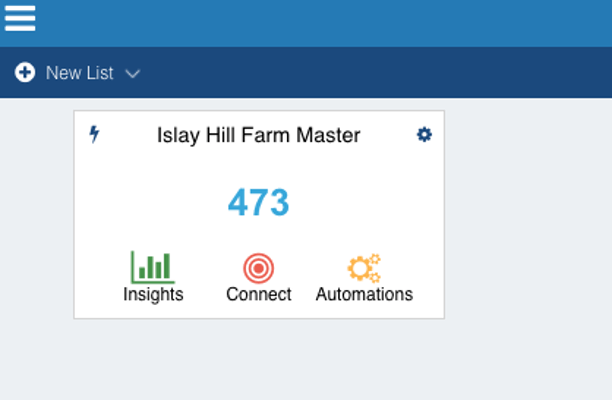
Segment Your Master List for Hyper-Targeted Farming
Once you’ve built a Master List, it’s essential to use the data to your advantage -- and zero in on what matters to you! To do that, click on the gear in the top right corner of the tile and select ‘Copy’ to make a copy of your Master List.
The heatmap and shape you created will pop back up. Now it’s time to have fun. This is where you can really get granular and refine your lists by adding all kinds of criteria. In fact, you’ll likely find criteria you may not have thought about before that would be perfect to add to help you better connect with your audience.
Let’s make it simple. We’ll refine this list to identify homes that have children living in them. To do this, you’ll navigate to Criteria > Owner > Demographics > Children at Home and then choose ‘Yes’. Our results show 79 properties with these new criteria added. Click ‘Make List’ and you’ve got your first (albeit very simple) segmented list.
Master List refined with 1) Children at Home
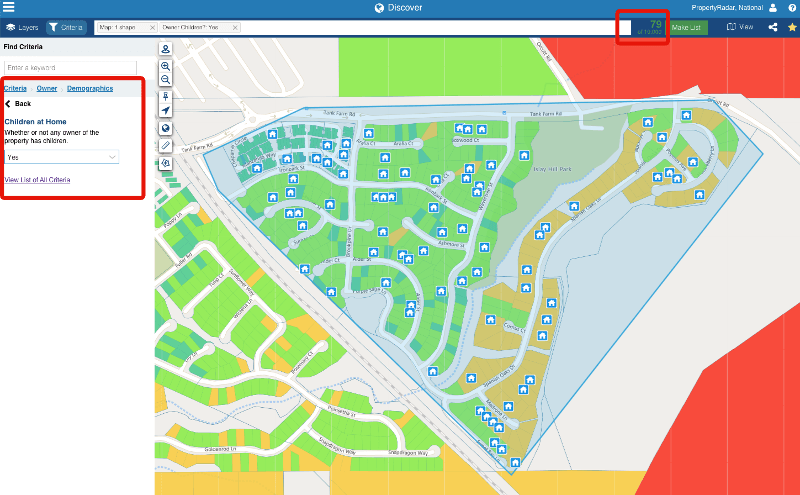
Let's refine our list further by finding out which property owners with children are interested in Cooking/Food.
Navigate to Demographics > Interests and choose 'Cooking/Food' from the drop-down menu. Now our list consists of 34 properties, as shown below:
Master List refined with 1) Children at Home, 2) Interested in Cooking/Food
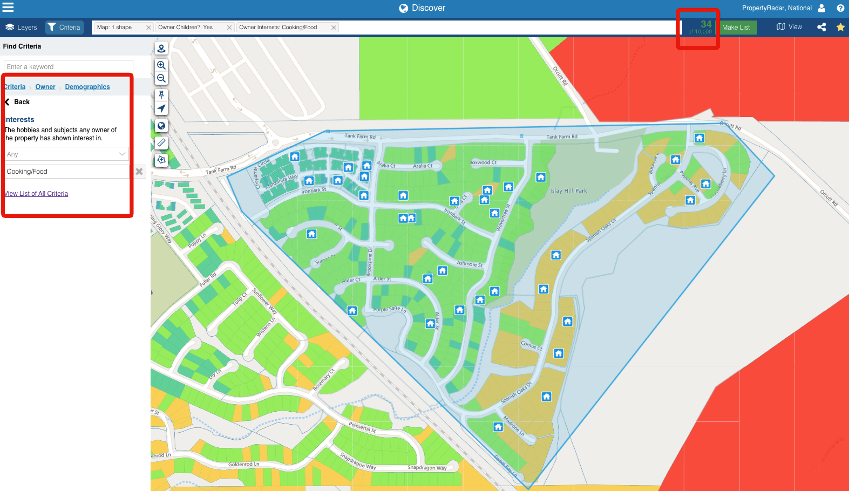
Let’s add one more criteria. And remember, you can build as many lists as you need or want.
REMINDER: Real estate farming is about continuously marketing to your audience, it's not about getting instant leads and sales. Farming is about building your brand and reputation with the goal of eventually building enough trust and credibility in your community so that you stay top of mind and are the first real estate professional people in your farm call when they need to sell.
The criteria we’ll add next is Charitable Giving to Local organizations.
Navigate to Demographics > Charitable Giving, and choose Local. We end up with 10 properties, as shown below:
Master List refined with 1) Children at Home, 2) Interested in Cooking/Food, 3) Local Charitable Giving
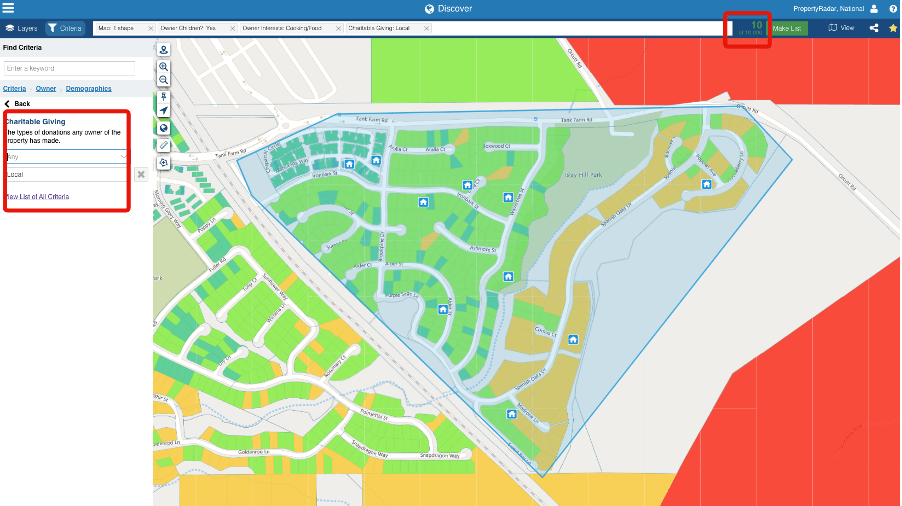
Additionally, by clicking ‘View’ in the top right corner, you’ll see 4 options to toggle between the type of view that works best for you, as shown below:
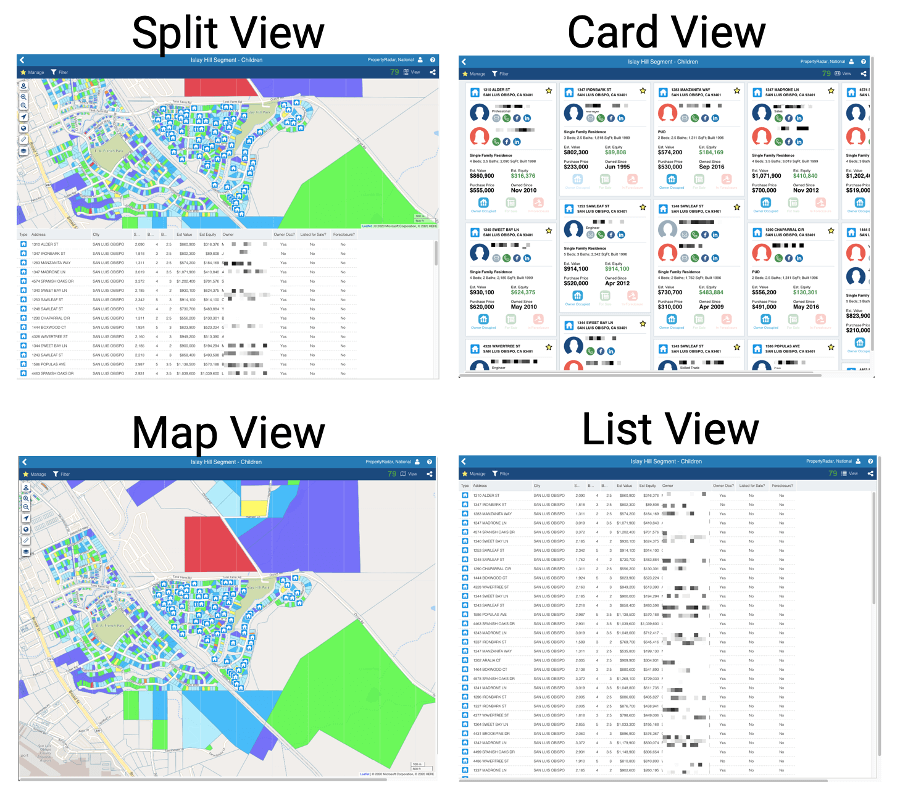
Categories of criteria have subcategories of criteria. With over 200 criteria to use to refine your lists, the possibilities are practically limitless...
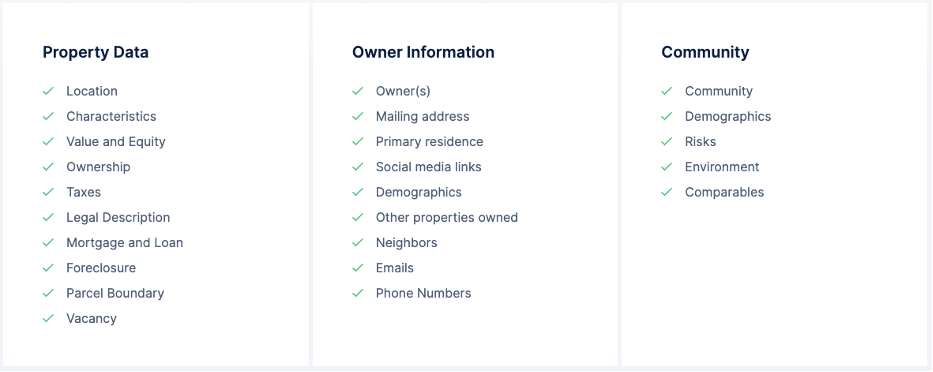
Want to dig deeper into neighborhood details? Click on any address bar within your list.
Then, as shown below, clicking the ‘Neighborhood’ tab reveals details about:
- Demographics
- Housing
- Housing Risk
- Neighbors
- Environment
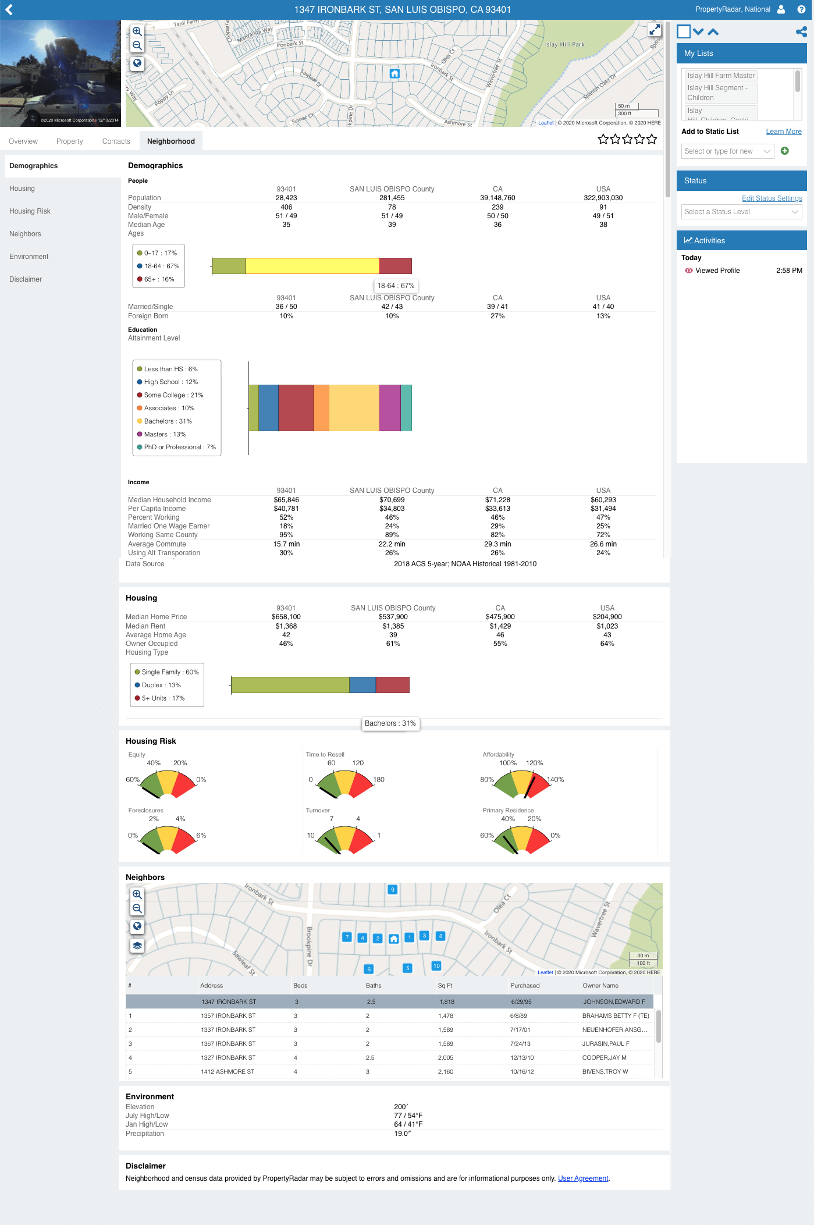
Building segmented real estate farming lists that help you understand who you’re targeting, why you’re targeting them, and how best to connect with them is the ultimate goal with list-making.
Imagine the messaging you can create just by knowing that the property owner has children at home, enjoys cooking/food, and likes to give back to their local community. And that’s just the tip of the iceberg when it comes to list building and insights.
Speaking of which, when you make segmented lists, you create list cards. From our examples above, we have 4 list cards: 1 Master List and 3 refined lists segmented from the Master List, as shown below:

Often, you want to see what commonalities a particular list has beyond the criteria you used to build them. Fortunately, PropertyRadar gives you insights into every list you create.
List Insights to Analyze Your Market
Connecting with prospects on your mailing list is where the rubber meets the road. That’s why with each list you create you get deep insights into the Properties and Property Owners that compose your list profile.
Click the green ‘Insights’ icon from your list card. In this case, let’s look at our segmented list for Islay Hill properties with children and who’s interested in Cooking/Food:
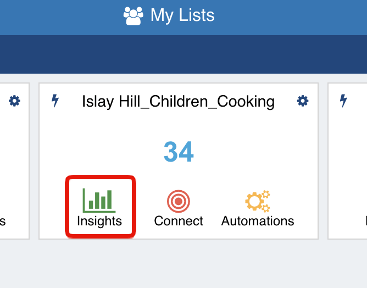
After you click Insights, at the top, you’ll notice two icons. Toggle between the two to see obvious and not-so-obvious insights and information about the Properties and Property Owners.
Within the Property Owner Insights, you’ll see a snapshot overview of your list as well as a visual representation of the following owner details:
- Snapshot (overview) of your list
- Owner Type
- Age
- Marital Status
- Income
- Ethnicity
- Businesses
- More
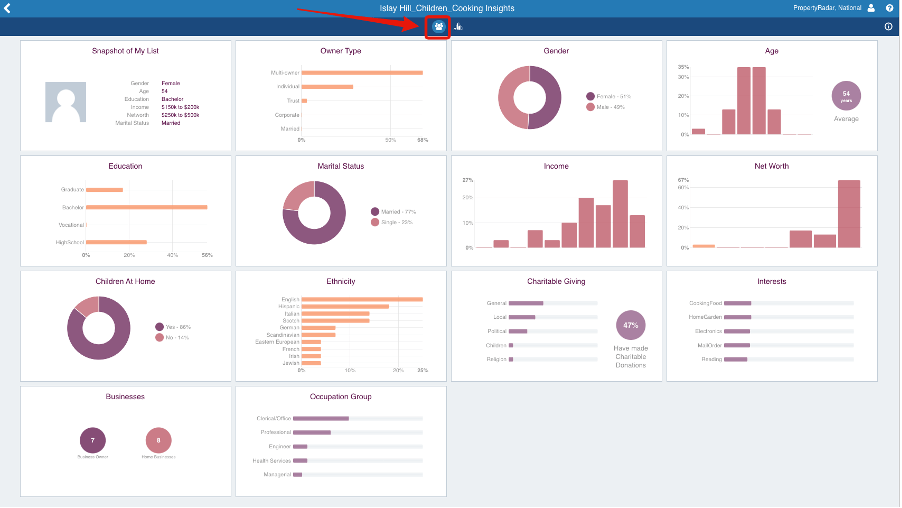
NOTE: Notice, under ‘Children At Home’, it says ‘No – 14%’. But how can that be if we chose to identify only properties with ‘Children At Home’? From time to time, you will find these shifts in data. Because unlike ‘hard data' like the number of bedrooms or square footage that tends to remain constant and follow a formal recording process when altered, ‘soft data' can change without notice - just like somebody’s interests can change. Use ‘soft’ data as a strong indicator, not a hard-and-fast fact.
Within the Property Insights, you get a snapshot overview of your list as well as a visual representation of the following property details:
- Snapshot (overview) of your list
- Property type
- Sales Volume
- Turnover
- Estimated equity
- Assessed value
- Estimated tax rate
- More
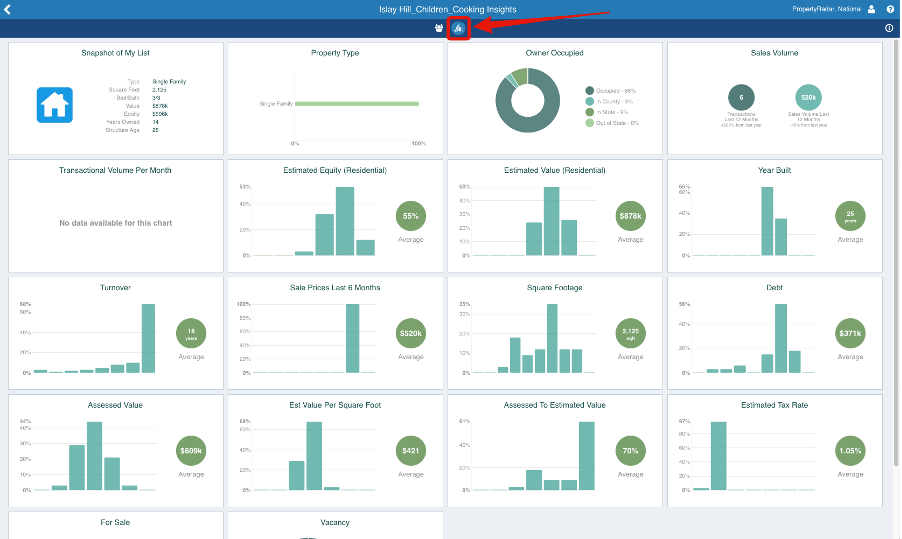
The data available for you to leverage in your real estate farming is all here.
- Use the data to create additional segmented lists to successfully tailor your messaging and show off your grasp of the market to potential clients.
- Compare segmented lists to find the best fit.
- Looking at homes with second mortgages can help suss out potential sales volume, property type, and more.
PropertyRadar makes it simple to see other potential real estate farming opportunities and determine what’s best and makes the most sense for the transactions you’re looking to make.
With insights like these, you can begin to understand why real estate agents love using PropertyRadar to build and support their real estate farming strategy. It gives you everything you need to succeed when farming real estate:
- Establish yourself as the local authority
- Gain in-depth insights into your markets’ trends
- Craft messaging that speaks to your audience
- Acquire and leverage market insights from data
- Ultimately…building a reputable personal brand
Put Your Real Estate Farming On Cruise Control with Automation
There’s no shortcut to devising successful real estate farming strategies. But where you can save time is in setting up your marketing campaigns and automating actions. After all, if real estate farming is about the slow drip of marketing touches, isn’t it better to automate as much as you can rather than manually try to stay on top of everything? Of course, it is.
Work smarter, not harder, by creating multi-touch multi-channel marketing campaigns that automatically trigger when new leads hit your list because they matched the criteria you set for it. In many instances, our automation capabilities help you get there first – and way before your competitors.
Setup Mailing Lists to Trigger Marketing Campaigns
Unlike traditional mailing lists that require lots of manual effort to make actionable, PropertyRadar's Dynamic Mailing Lists aren't just actionable; they actually work for you by:
- Alerting you to new leads by sending you mobile push notifications or emails
- Triggering marketing campaigns – single piece mailers and even multi-touch, multi-channel marketing campaigns
- Updating themselves with new leads and opportunities – daily, so they’re always fresh and up to date.
Moreover, you can tailor your direct mail and marketing campaigns to uniquely match each marketing list. Messaging, images, and design can all be optimized to match the specific audience you're marketing to:
- Marketing Pieces: Just Sold cards, Proof of Success pieces, Neighborhood and Market updates, Free Home Equity updates, and more
- Channels: Physical Direct Mail, Text, Email, Phone Call
- Cadence: Days, Weeks, Months, even Years
And because PropertyRadar integrates with over 2,000 CRM, project management, and productivity tools, you can customize your marketing automation stack to show what you want, how you want, and when you want.
Once set up, you’ll be real estate farming like a pro without the tedious work and boring, redundant activities you probably dread. Instead, you’ll be out at mixing it up at community events, putting on speaking engagements, and building your brand by hobnobbing with the local folk. You’ll be accomplishing things you only can with quality face time. And all the while, your real estate farming will be working for you while you go about your day. Now that is real estate farming like a pro!
Take Your Real Estate Farming To The Next Level With PropertyRadar
Real estate farming is a sure way to beat out your competition – but you’ll need to stay top of mind if you want the flywheel of marketing to start turning, and enjoy all the benefits it brings. That’s why it’s even more important to stay engaged, follow the data, and maximize your time with automation that PropertyRadar offers data-driven professionals.
If you want to take your real estate farming to the next level, PropertyRadar is how you do that. And while you establish your farm, keep yourself motivated with these five tips from the pros:
- Establish your foundation and prioritize what matters to the success of your farm.
- Turn to data to drive your strategy. Following your gut is never enough.
- Be prepared for the long haul. Remember, it’s a marathon – not a sprint!
- Automate everything you can -saving yourself time and money
- Eat when you need to. Short-term gains can make it easier to wait until farming bears fruit.
Top agents use public records data to generate valuable leads and take their real estate farming strategy to the next level – and you can too. Curious? Start your free trial of PropertyRadar and get the data you need to find success.
